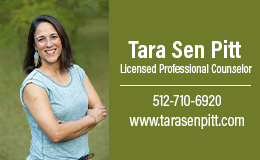When I was a toddler, I ensured that posterity would be free of any lasting memories of my terrible twos. In one fell swoop, I learned to use scissors, and my mom learned that she had a very mischievous little boy on her hands. She took the scissors, but I graduated to a hammer about a year later—a story for another day. (Poor choo-choo train!)
I was a toddler about three decades before social media, sowhat was done was done. Finis! I had practically erased my nascent identity before I even got a good start on making mud pies and being “stuck on Band-Aid brand.” I guess the modern equivalent would be little Ethan or Ellie chucking the family backup drive into the toilet, deleting the now ubiquitous cloud drive or some such shenanigans.
Truth is, a modern parent would easily be able to piece together almost all the pictures of their blameworthy bundle of joy just by surveying the landscape of their social media empires. Instagram and Facebook alone would keep Ken Burns buried in enough footage for a sizeable documentary.
In fact, “sharenting” has become so infused into the way that we do parenting these days that none other than the American Academy of Pediatrics (AAP) recently stepped into the fray to offer their sage advice on how to navigate the always tricky path of when to share and when to pare.
Just this past October, Pediatrician Bahareh Keith, DO, MHSc, FAAP, and law professor Stacey Steinberg, JD, spoke at the AAP National Conference in San Francisco, presenting on “What Parents Should Share: Child Privacy in the Age of Social Media and the Pediatrician’s Role.”
Steinberg’s research will also be featured in an upcoming issue of Emory Law Journal. Here she’ll explore the ethics and dueling rights of parents and children related to what is shared about children online.
With all the medical dangers and legal minutia at hand in the 21st century, isn’t it telling that such a highly trained pediatrician and a vaunted legal expert would rally to the importance of over-sharing on social media and the need for us parents to be thoughtful, safe and collaborative in our approach?
In exploring the dangers of “sharenting,” CNN Health’s feature writer, Jacqueline Howard, reported the horror story of a mother who posted a picture that was later accessed, altered and uploaded to a website frequented by pedophiles.
So, yes, this is an issue that is more than fodder for silly parenting-poking memes. This is serious business. It may be painstaking work, but it’s important that you know how to guard your children’s online privacy and potentially, their safety. Howard shares these seven do’s and don’ts from her research:
- DO familiarize yourself with the privacy policies of the sites with which you share.
- DO set up a notification to alert whenever your child’s name appears in a Google search result.
- DO share anonymously, and consider not sharing publicly, if you choose to post about your child’s behavior struggles.
- DON’T share, or use caution when sharing, your child’s actual location.
- DO give your child veto power over online disclosures, including images, quotes, accomplishments and challenges.
- DON’T post pictures that show your child in any state of undress.
- DO consider the effect sharing can have on your child’s current and future sense of self and well-being.
Gone are the days when a rambunctious toddler could delete his entire photographic history with a pair of shears in his hand and a glint of mischief in his eye. Be patient, be practical and be proactive. Be a parent who will protect the dignity and security of your child’s online story just as much as you do their carrot-stained, peek-a-booenthralled real-life existence. That’s a story worth sharing!
Richard Singleton, MACE, MAMFC, LPC, is the executive director at STARRY in Round Rock.
















